Waldeck once lay on the trade route between Franconia and Bohemia. The village made use of this strategic advantage after an accident in 1794. The old Waldeck nestled against the castle hill. It was completely destroyed in a fire. For the Abbrandler, as the inhabitants were called from then on, a new village was planned on the drawing board by master builder Heinrich Dobmayer. This time it was more accessible, situated on the trade route and pragmatic, with a street layout in L-shape, which is still easily recognizable today.
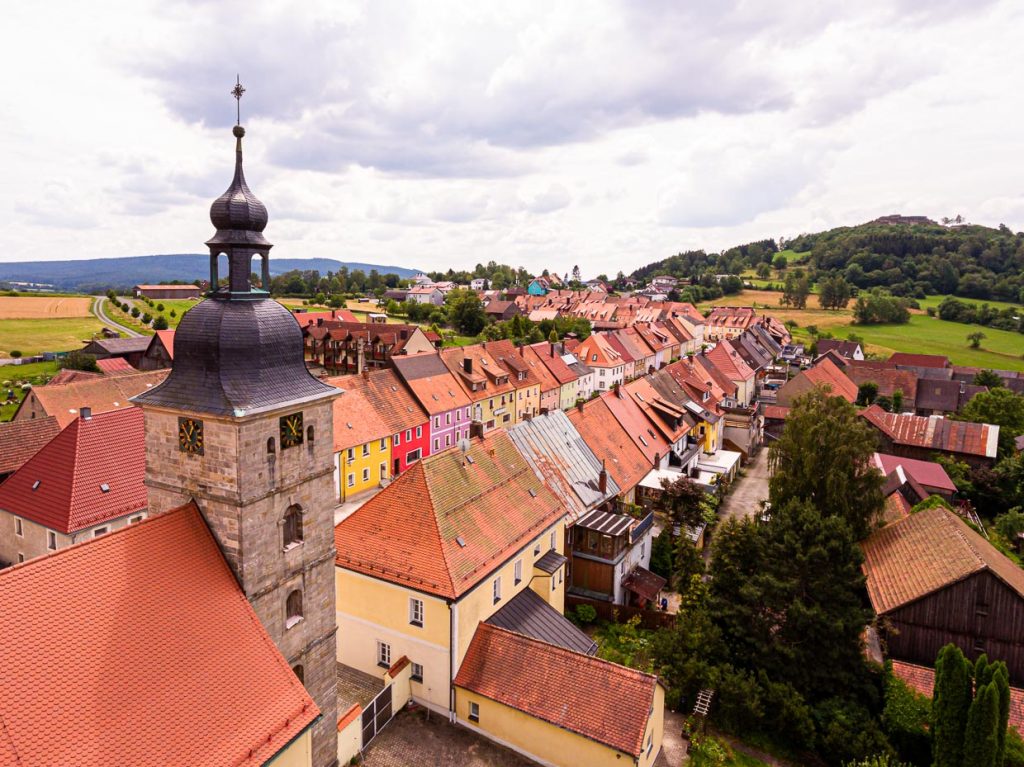
In this historic row of houses, more and more houses stood empty in recent years. The trade routes of yesteryear, are now hiking or biking routes. The traffic of goods has shifted to highway and rail. Waldeck is now off the beaten track, but fully in line with new tourist concepts. Like the Italian Albergo Diffuso, where villages from which the youth has moved away become idyllic vacation spots for city dwellers.
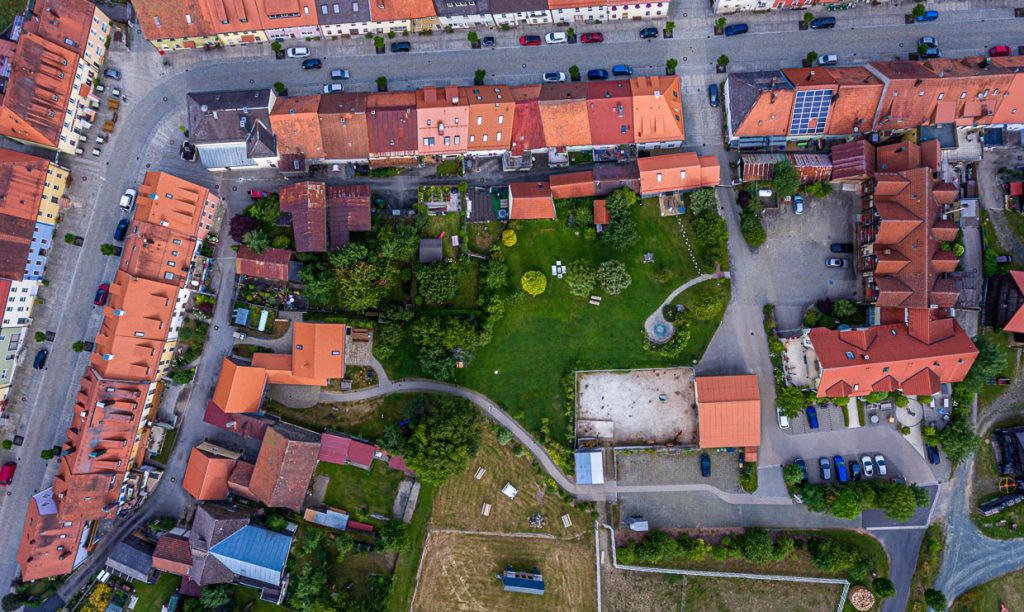
Long before homing took off as a trend and Corona referred us to the beauty and discoveries in our own country with Staycation, Elisabeth Zintl began converting vacant village houses into cozy vacation retreats for families, groups or couples. In this way, travelers in Waldeck in the Upper Palatinate become guests in the middle of the village.
Albergo Diffuso in Bavarian
The Hollerhöfe vacation homes leave room for imagination. A modern interior meets old, lovingly restored substance. It is cozy and yet as a guest you can effortlessly imagine how people lived here 200 years ago.
Elisabeth Zintl, a native of Waldecker, has remained in her village and has now already converted four of these abandoned houses. The essentials are preserved, the protection of historical monuments is respected and yet new things are created. Thus, over the years, the Schusterhaus, the Schreiberhaus, the Kanzlei and the Kößlerhaus have been built, as well as several barns and a large area where the guests of the Hollerhöfe can relax and children can play.
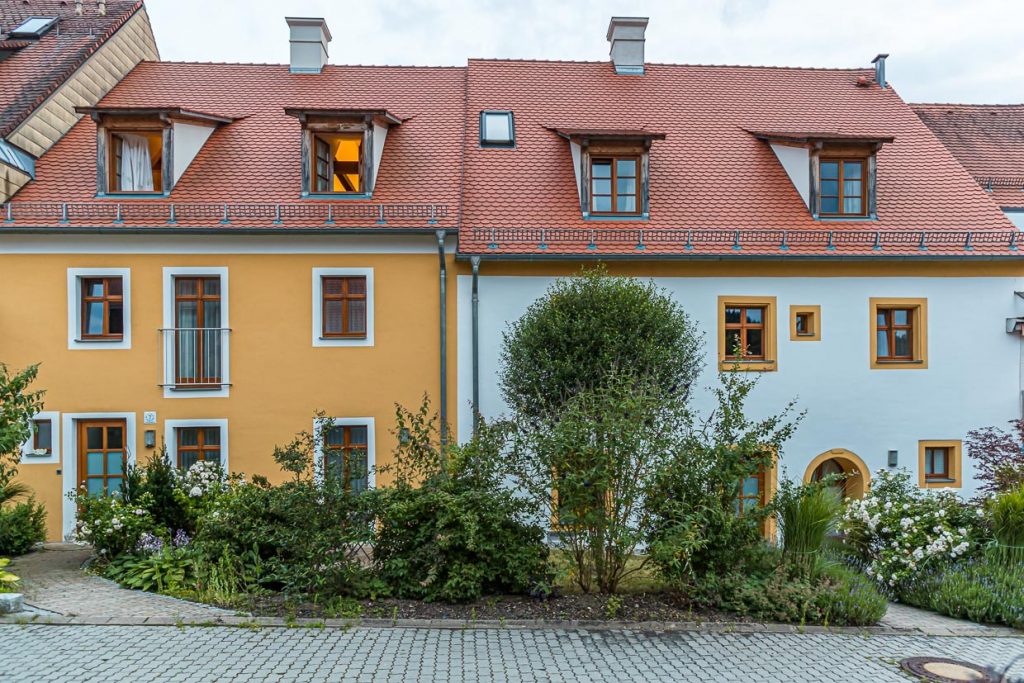
Old brickwork and beams can be seen. Wall cupboards, the forerunners of our refrigerators, have been preserved. In the Schusterhaus, the black stone of the fireplace flue was incorporated as an exciting backdrop for a modern bathroom. In the Schreiber house, a nest swing hangs from the beam. The renovated barn provides space for meetings and wedding receptions, and the manufactory hosts cooking events.
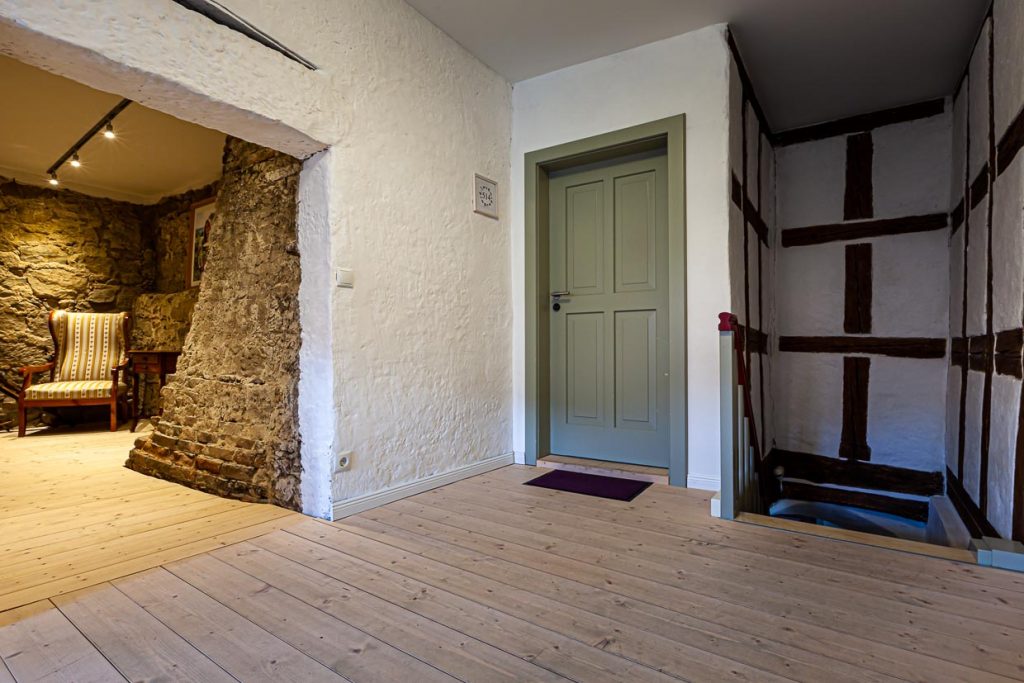
In the middle of the herb meadow stands a Tiny House, the modern form of a construction trailer, for meetings in a small circle or as a workplace with a view of the Upper Palatinate hills. The Hollerhöfe are a vacation idyll with a pinch of history as well as coziness and comfort and lots of nature on the doorstep.
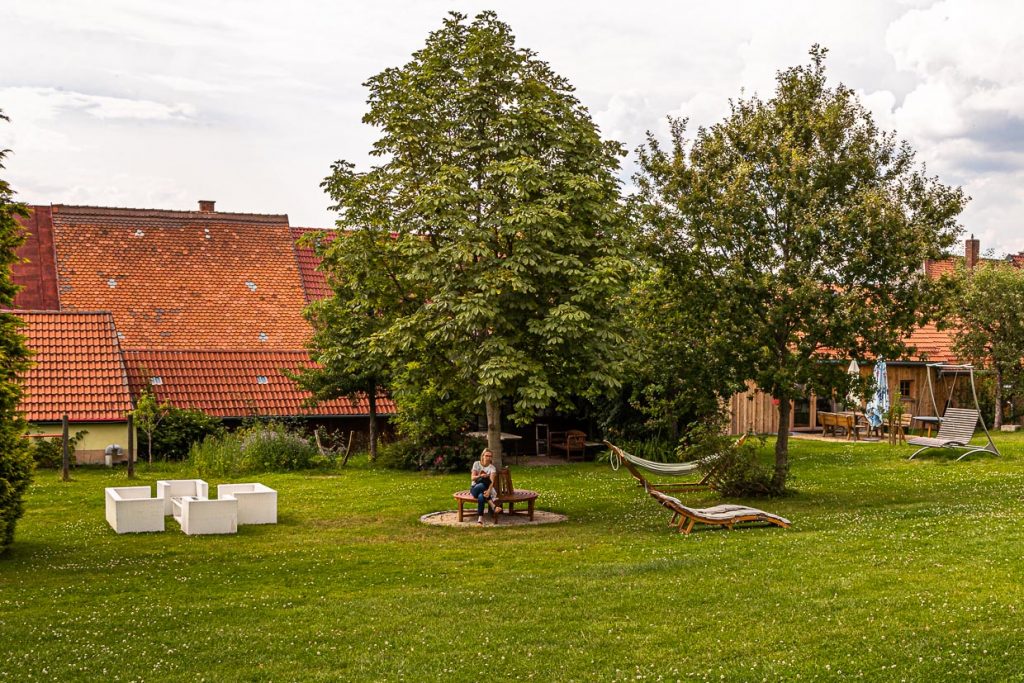
Edible plants in Germany’s first wild plant park
An adventure trail about five kilometers long begins directly at the Hollerhöfe farms. It winds through the landscape and connects a total of 13 sections of the first Edible Wild Plants Park in Germany, or Ewilpa for short. The existing nature was supplemented by wild fruit hedges, tree groves and colorful areas full of wild herbs.
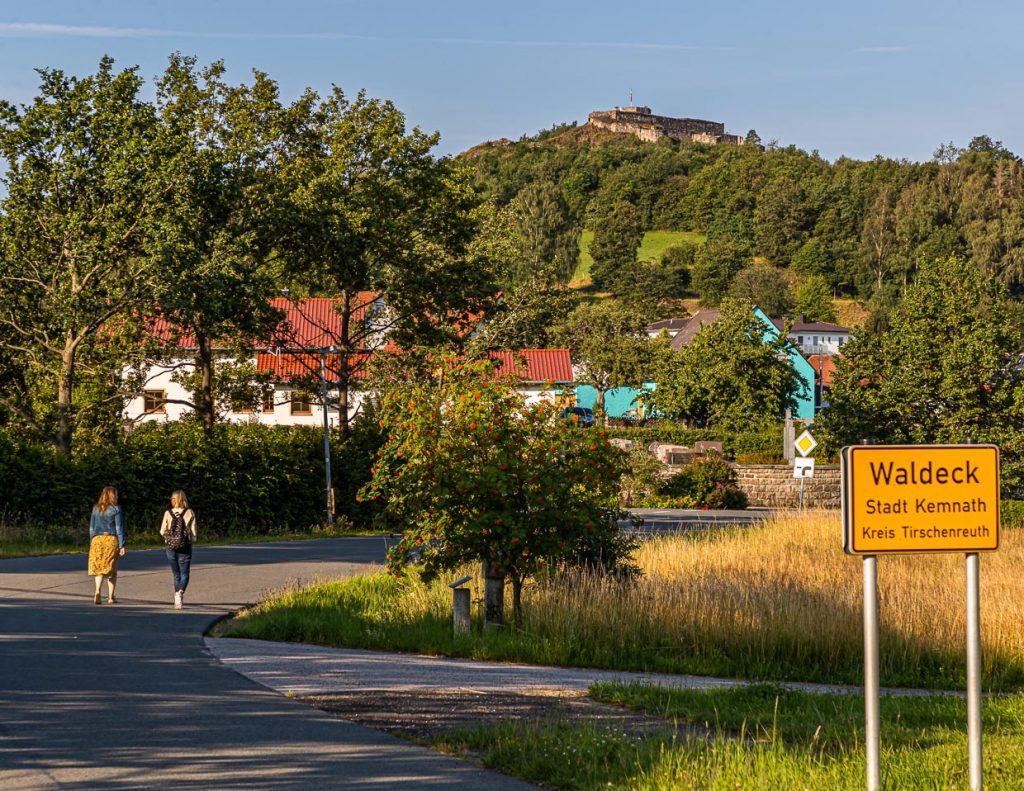
Elisabeth Zintl’s home trail is the path from the Hollerhöfe farms up to the Schlossberg. On this trail alone she finds numerous herbs, which she picks to make a hand bouquet. In the process, she talks about the idea of a nourishing landscape to touch and enjoy.
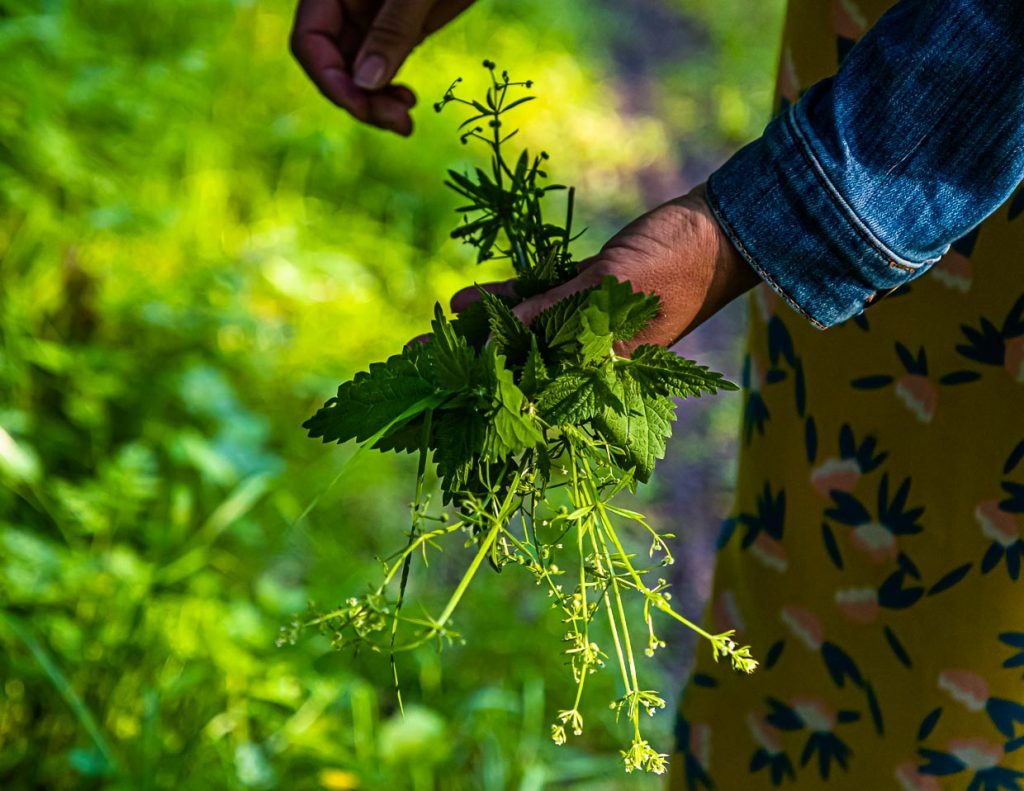
At Ewilpa, existing nature is made visible to visitors. Nature produces everything that grows here itself, nothing is cultivated. Apart from a few sheep that do their work and keep the meadows short. Here you can find food that also makes you full. “Wanted are not only wild herbs as a spice, but also plants from which I can provide a whole meal,” explains Elisabeth Zintl. Nettles and goutweed, for example, can be made into a quiche. Burdock ragwort soaked in water softens it and gives it a lovely taste.
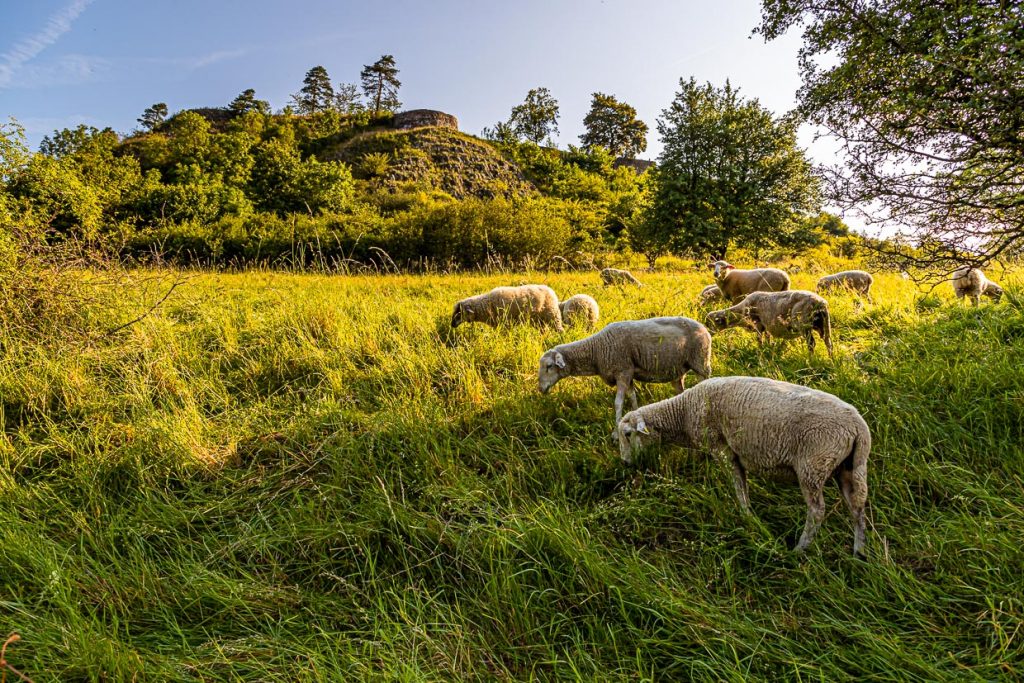
Academy for nature experiences
Much of the park of edible wild plants has grown over the centuries, explains Elisabeth Zintl. Chestnut, copper beech, walnut tree, hazelnut. The fruits of these trees and shrubs used to be collected to get through the winter. Today, trained herbal guides bring the old knowledge back to the people. “Our region,” says Zintl, “is experiencing a definite revival thanks to the many wild plants now followed by herbal guides.” The speakers complete training in edible wild plants at Ewilpa and carry this theme in their courses and guided tours. Arriving at the Schlossberg, Elisabeth Zintl picked an entire hand bouquet, which will later be made into a green smoothie back at the Hollerhöfe. Vacationers can book guided tours and workshops through the Nature Experience Academy in Waldeck.
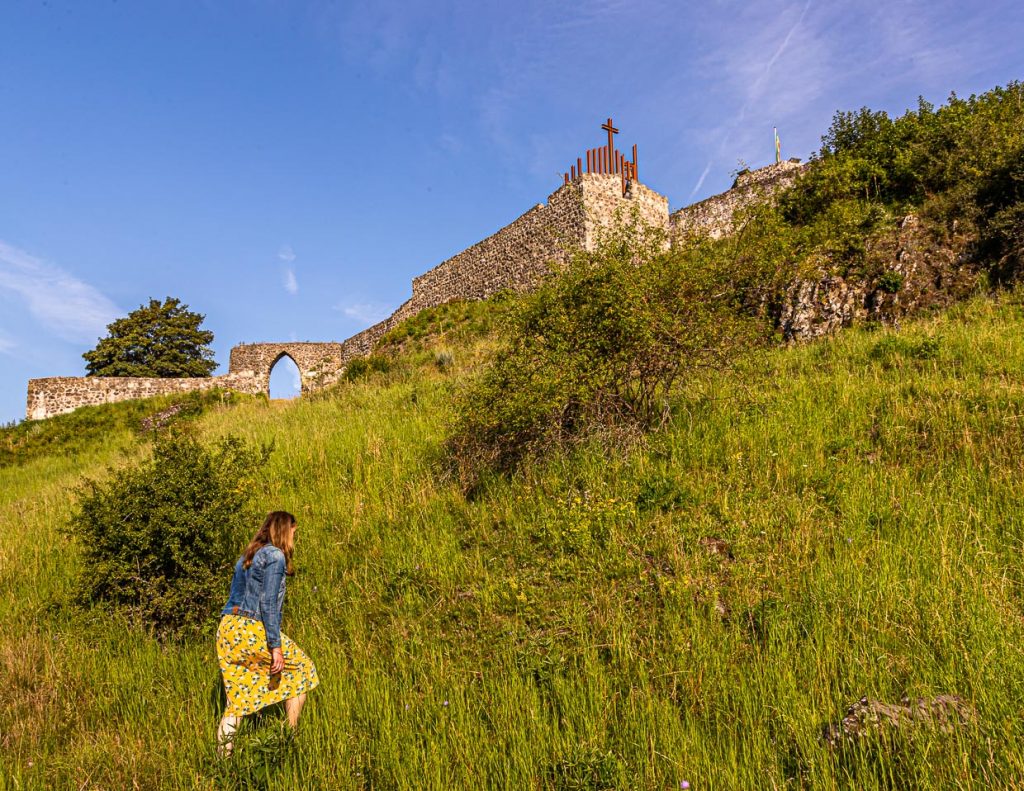
The bell of Waldeck
The ruins of the old Waldeck Castle stand on a volcanic hill. The view over forest and fields goes up here in all directions. Whether to neighboring Kemnath, to Grafenwoehr or Regensburg.
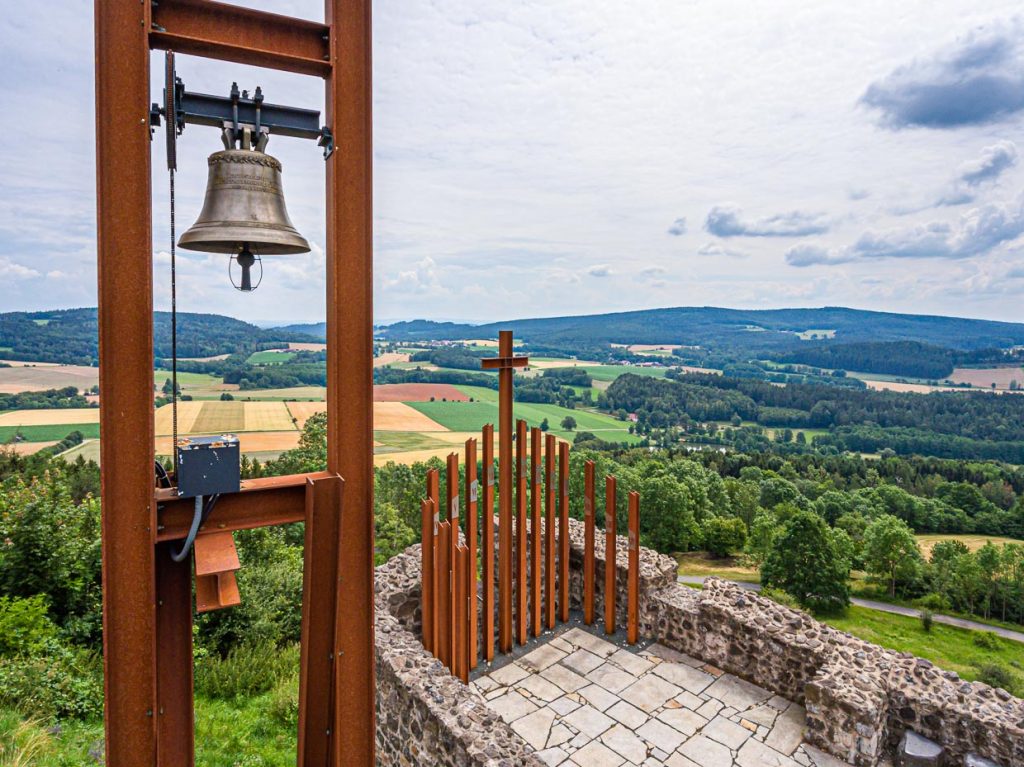
The village community of Waldeck has been committed to the preservation and partial reconstruction of the Waldeck castle ruins since the 1980s. A particular concern was the reconstruction of the old castle chapel, including a bell that would resound from the castle hill. In 2015 the time had come. The Saint Anne bell was even cast on site, in the soil of Waldeck. Since then, it has been hanging in a tower made of plain iron stems. This bell for all has been striking twice a day since then, early in the morning and in the evening. Leonard Zintl, together with the historical society, did not accept the usual opposition during the realization of the castle chapel and bell tower. His family donated the bell. Now Zintl is even a kind of modern bell ringer, because on his cell phone, his wife reveals, he has an app with which he can make the bell strike.
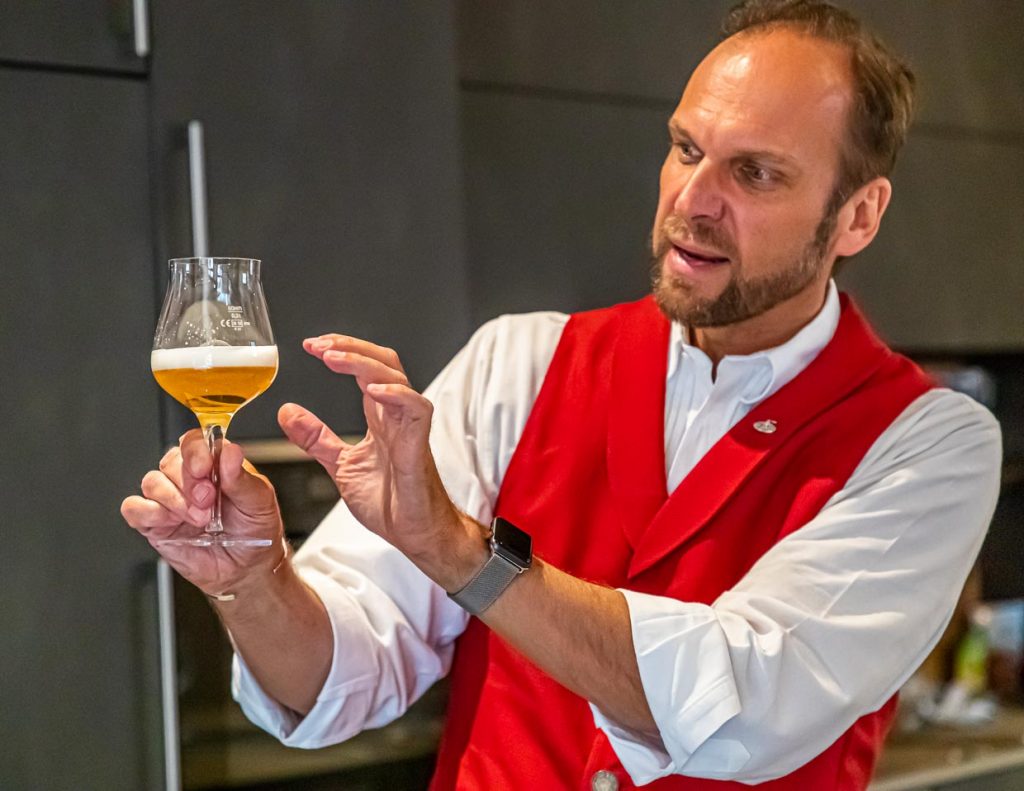
The Upper Palatinate – beer as a cultural asset of the region
The Upper Palatinate is a good place to learn about and enjoy beer. Trips to neighboring towns such as Mitterteich or Falkenberg are a good way to get to know the medieval zoigl culture. Elisabeth Zintl also brings beer culture directly to the Hollerhöfe in the form of beer sommelier Georg Hiernickel. The trained brewer comes from a Franconian brewery family. Hiernickel will give an entertaining lecture, combining interesting facts and humor from the world of brewers, maltsters and beer drinkers.
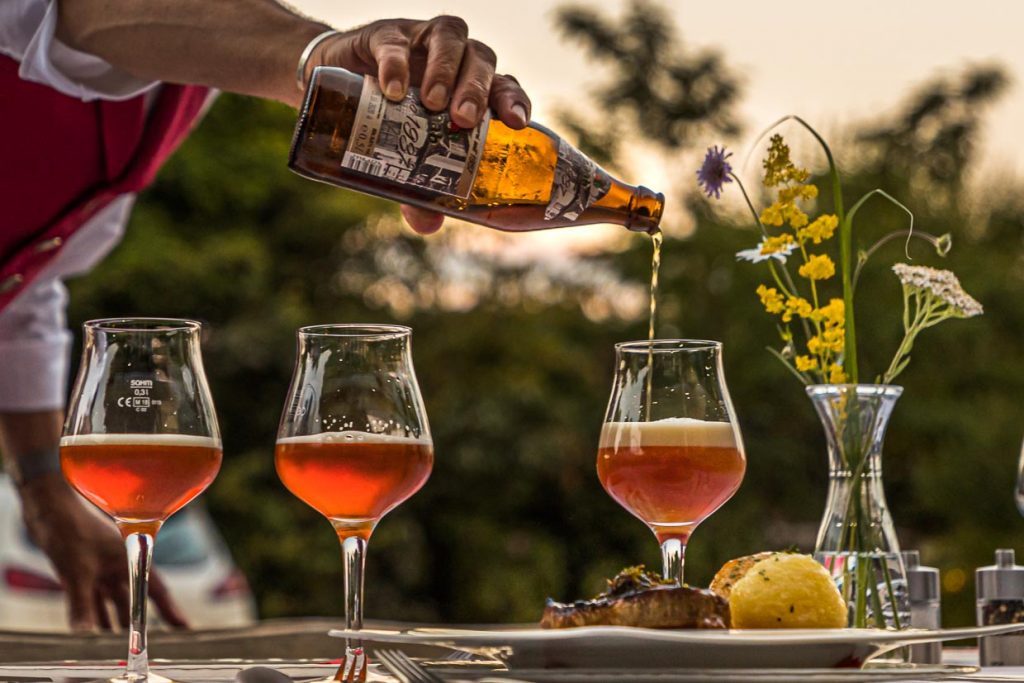
It is about beer production in old and new times, about raw materials and purity law and about the variety of beer flavors to discover. We learn about smooth Pils and that a beer glass reveals a lot about the thirst of the drinker. After all, beer foam leaves traces on the rim of the glass, from which you can tell how many times you’ve drunk. We’re talking about house brews, Kellerbier, Zwickelbier and Märzen.
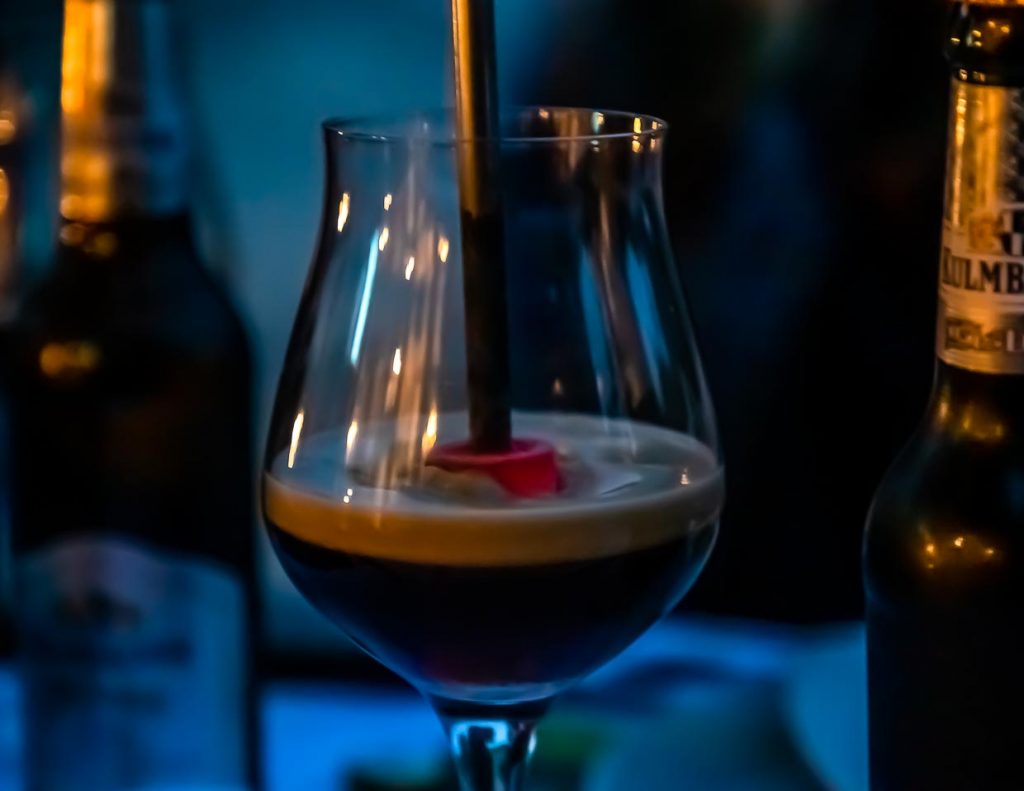
The dramaturgy of the evening, embedded in a four-course menu, reaches its climax with an Eisbock beer. Bock beers have a high residual sugar content and are particularly well suited for spiking. This involves holding a red-hot iron into the very cold bock beer. A delicious creamy foam forms that tastes of caramel and chocolate.
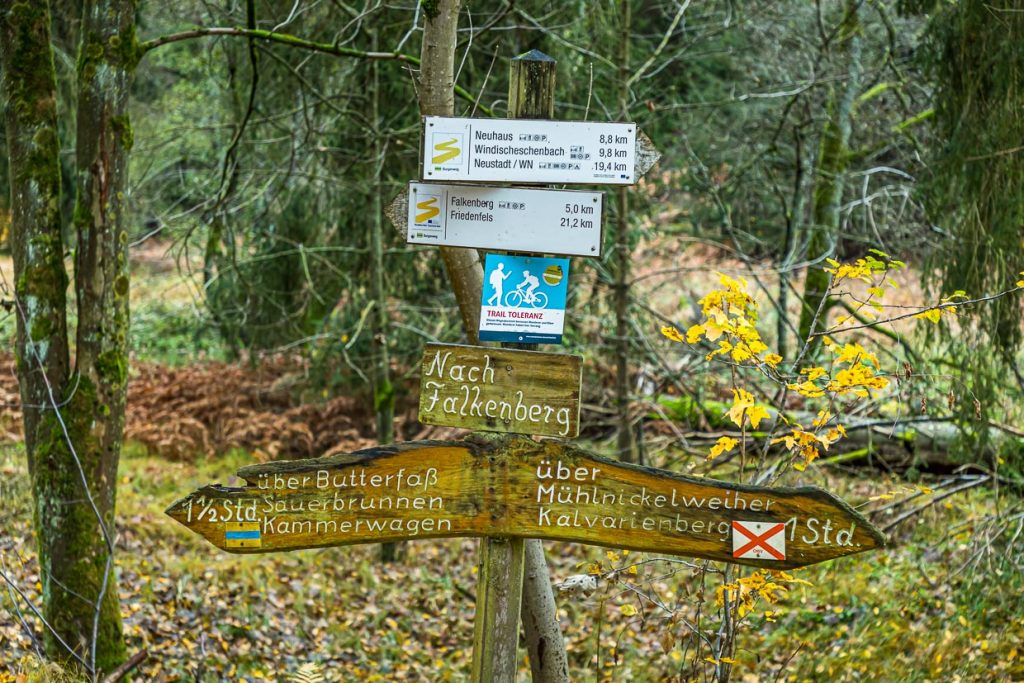
Castles, brewing rights and a fairytale forest
Vacations in one’s own country have been very popular again since 2020. Many a hardly noticed region comes on the agenda as a travel alternative due to corona and thus becomes a voyage of discovery with many positive impressions. The Upper Palatinate is also one of the German regions with great surprise potential. There is a well-developed network of paths for cyclists here. From railroad tracks to bike buses and guided bike tours. Hikers can choose from countless well-signposted hiking routes. Among them is a section of the quality hiking trail Goldsteig.
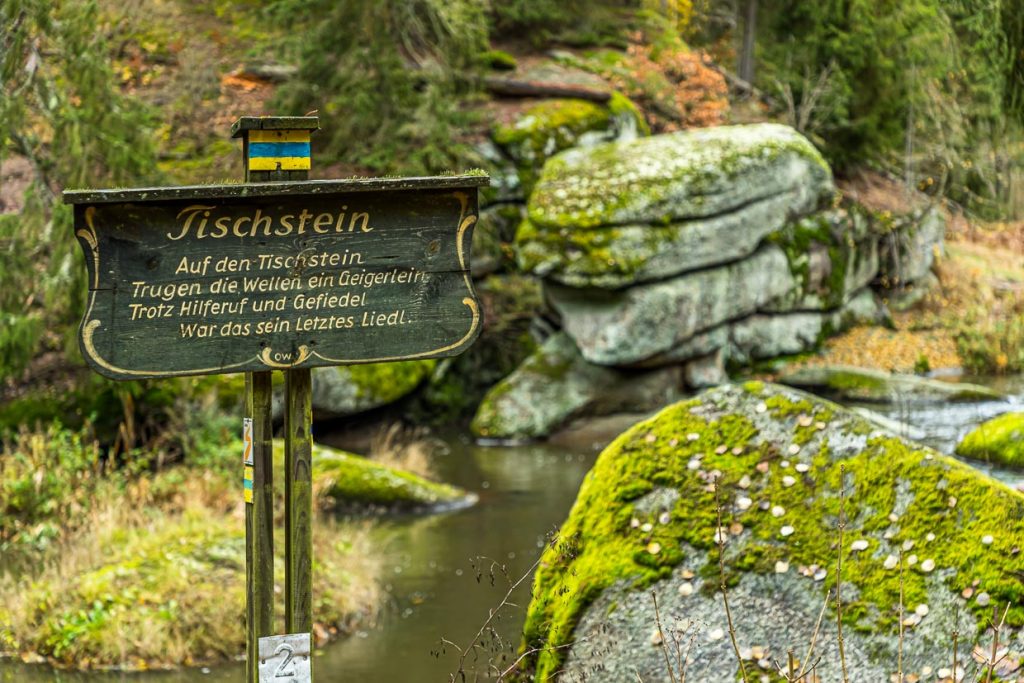
The village of Falkenberg is an excursion destination that scores in three respects. Here begins a particularly wild-romantic hiking section along the Waldnaab. The mighty rock of Falkenberg Castle is one of the most beautiful geotopes in Bavaria. The castle was made accessible to the public with a lot of commitment of the village community. An elevator was built into the well shaft of the imposing granite rock and the rooms of the castle were made accessible to visitors in a spectacular way. Meetings and weddings are held at Falkenberg Castle. There are eight hotel rooms. Here too, similar to the Hollerhöfe, each room breathes history. In addition, there is a wonderful view from the high castle down to the town.
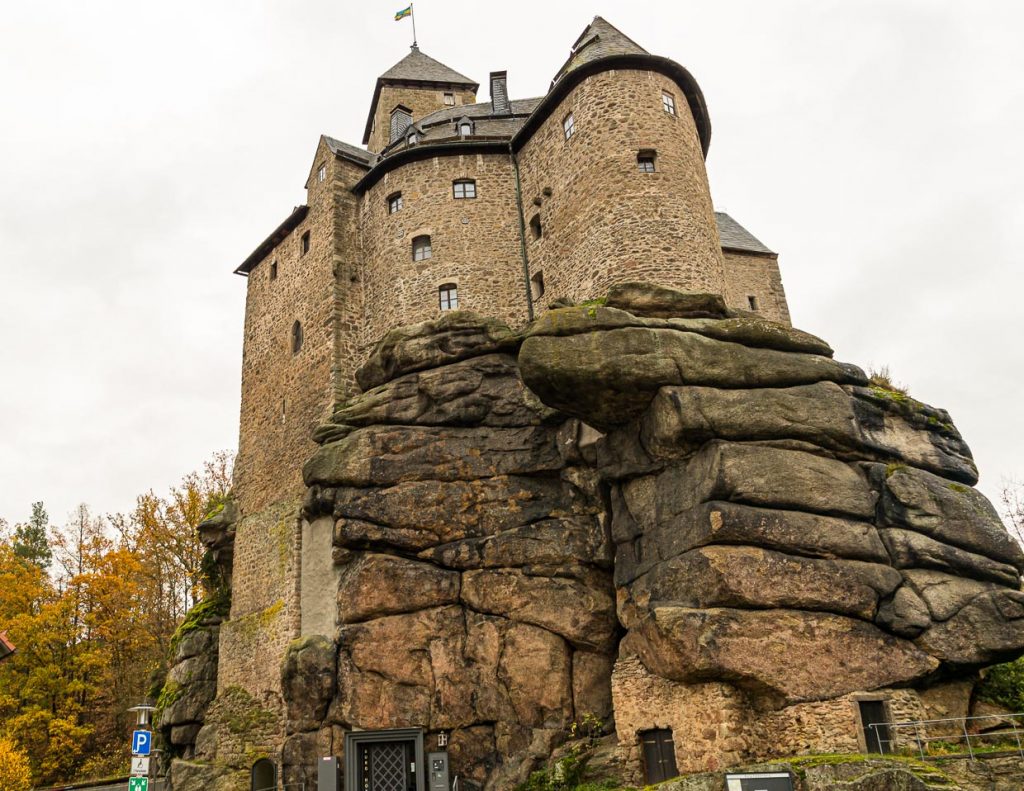
A visit to the castle museum is highly recommended. It is dedicated to the former lord of the castle. Friedrich Werner Graf von der Schulenburg was a diplomat. Schulenburg bought and renovated the dilapidated walls in the 1930s. The castle was to become his retirement home. But Schulenburg was accused by the National Socialists of being a co-conspirator in the July 20 terrorist attacks and executed in 1944. The exhibition at Falkenberg Castle is dedicated to the turbulent life of the count. His fate also reflects the history of the 20th century.
Zoigl culture in Falkenberg
The third reason for a visit to Falkenberg is the living Zoigl culture. Falkenberg is one of the five places in the Upper Palatinate where you can find genuine Zoigl from the communal brewer. Several times a year, black smoke rises above the old brewery. The classic brewing process is a regional cultural asset. Genuine Zoigl is brewed by the brewers.
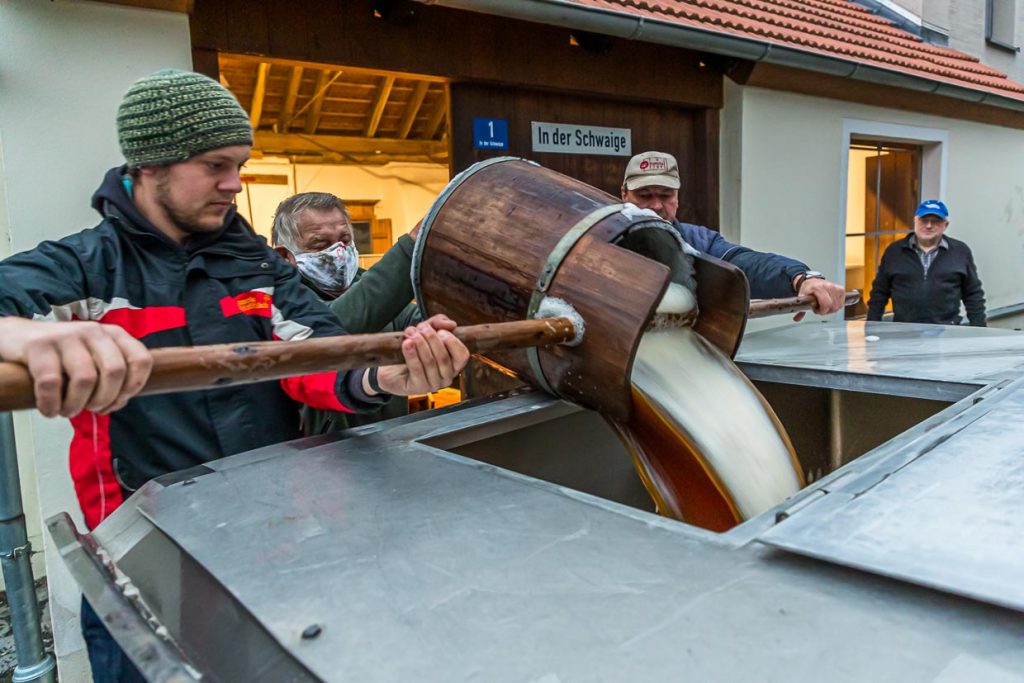
Zoigl beer is a bottom-fermented unfiltered beer. The Zoigl brewing right has existed in part since the Middle Ages and is firmly linked to the house and property. The Zoigl taverns brew according to demand. The Zoigl tradition can be experienced in Zoigl-Stuben, which are open to the public and offer the beer according to a Zoigl calendar that changes weekly, along with simple dishes.
More stories from the Upper Palatinate
Reportage about the traditional brewing process in the Kommunbrauhaus Falkenberg
Report on a visit to a traditional Zoigl pub
Further information
- Visit to Falkenberg Castle – More about the castle, as a hotel, event location and museum
- More information about the Hotel Hollerhöfe in Waldeck
- Nature Academy Market Waldeck (ewilpa)
Print publication
The cost of half board was not calculated by the hotel

